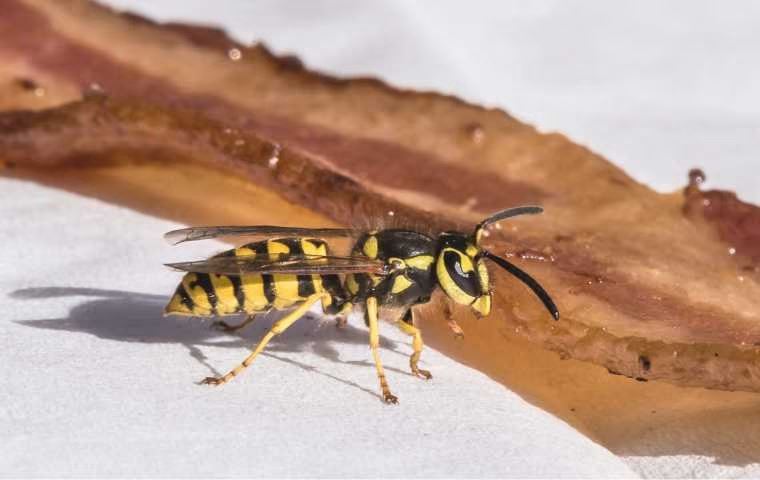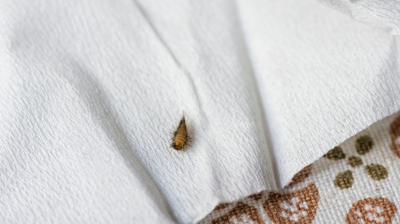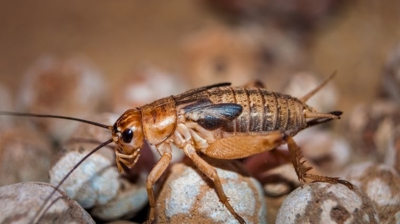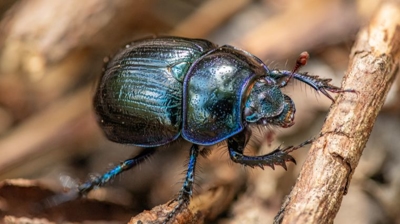
Yellowjackets
What Are Yellowjackets?

Yellowjackets, scientifically known as Vespula and Dolichovespula, are a group of aggressive, social wasps that belong to the family Vespidae. They are known for their distinctive black and yellow coloration and are often mistaken for bees due to their similar appearance. These insects are found in various parts of the world, with multiple species existing in North America.
Yellowjackets are social insects, living in colonies with a well-defined caste system, which includes queens, workers, and males. The colonies are typically founded in the spring by a mated queen that overwinters and then begins building a nest. The nests are made of paper-like material, which is created by mixing wood fibers with saliva. They can be located underground, in cavities, or even aerially in shrubs or trees.
Yellowjackets are known for their aggressive behavior when defending their nests. They can sting multiple times and their stings are painful, as they inject venom. This aggressive behavior is primarily a defense mechanism, as they perceive any threat to their colony as a danger to the queen and the survival of the colony.
These insects are opportunistic predators and scavengers, feeding on a variety of foods, including insects, fruits, and sugary substances. They are often attracted to outdoor picnics and can become a nuisance, particularly in late summer when their colonies reach their peak size.
Understanding yellowjackets is important for pest control and safety. If a yellowjacket nest is located near human activity and poses a threat, it should be dealt with cautiously by professionals, as attempting to remove the nest can be dangerous due to their aggressive nature.
What Do Yellowjackets Look Like?
Yellowjackets are easily distinguishable due to their distinctive black and yellow coloration, which is similar to that of bees. Here is a detailed description of what yellowjackets look like:
- Size: Yellowjackets are typically about 10-16 mm (0.4-0.6 inches) in length. Queens are usually larger, measuring around 19 mm (0.75 inches).
- Body: They have a slender, elongated body with a clearly defined waist, making them different from bees, which have a more robust and hairy appearance.
- Coloration: Yellowjackets have a bright yellow and black color pattern. Their head and thorax are primarily black, while the abdomen is marked with distinct yellow and black bands. The patterns may vary slightly among different species.
- Antennae: Yellowjackets have long, slender antennae with 12 segments. Their antennae are typically black.
- Wings: They have two pairs of transparent wings, with the forewings slightly longer than the hindwings.
- Stinger: Yellowjackets have a smooth, lance-like stinger, which allows them to sting multiple times. This is in contrast to honeybees, which have barbed stingers that remain embedded in their target after a single sting.
- Legs: Their legs are relatively thin and not adapted for carrying pollen, unlike bees.
- Nest: While the appearance of the individual yellowjacket can vary depending on the species, they all share the common characteristic of building nests from a papery material. The nests can be underground, in cavities, or suspended in trees or shrubs.
There are several species of yellowjackets, and their specific markings may vary slightly. However, the general coloration and body shape described above are common characteristics for this group of wasps. Understanding these physical characteristics can help in distinguishing yellowjackets from other insects, such as bees or hornets.
Learn more: What Do Yellowjackets Look Like?
Where Are Yellowjackets Found?
Yellowjackets can be found in a variety of habitats, and their nesting sites can vary depending on the species. Here are some common locations where you might encounter yellowjackets:
- Yards and Gardens: Yellowjackets are often attracted to sugary foods and can be found around outdoor picnics, barbecues, and other events where sweet or savory foods are present. They may also visit flowers in search of nectar.
- Wooded Areas: Some species of yellowjackets build their nests in tree cavities or shrubs in forested areas.
- Underground: Many yellowjacket species construct their nests underground in abandoned burrows, rodent holes, or other cavities. These underground nests are often well-hidden and can be challenging to spot.
- Structures: Yellowjackets may build nests in or around buildings, such as in wall voids, eaves, or attics. They may enter homes or structures in search of food.
- Hollow Trees: Some yellowjacket species create nests in hollow trees or logs.
- Urban Areas: Yellowjackets are adaptable and can thrive in urban and suburban environments. They may build nests in bushes, shrubs, or even inside utility boxes.
- Gardens and Orchards: Yellowjackets are attracted to ripe fruit and can often be found in gardens or orchards where fruit is present.
- Hiking and Camping Sites: In outdoor recreational areas, especially during late summer and early fall, yellowjackets can be attracted to human food and may become a nuisance.
- Dumpsters and Trash Bins: Yellowjackets are scavengers and can be found near dumpsters and trash containers where they search for food.
- Parks and Public Spaces: In public areas with food vendors or areas where people congregate, yellowjackets may be attracted to food scraps and waste.
Exercise caution when encountering yellowjackets, particularly if you come across a nest. Yellowjackets are known for their aggressive defense of their nests and can sting repeatedly. If you suspect a yellowjacket nest near your home or a public area, it's advisable to contact a professional pest control service for safe removal. Attempting to remove a nest on your own can be dangerous.
What Is The Life Cycle Of Yellowjackets?
The life cycle of yellowjackets is a well-defined process that encompasses various stages. It all commences in early spring when mated queens, which have overwintered, emerge from their hibernation sites. These queens are the sole survivors from the previous year's colony. They embark on a quest to locate suitable nesting sites, which can vary from underground burrows to above-ground locations like shrubs or trees. Once a nest site is chosen, the queen starts laying a small number of eggs and diligently tends to them until they hatch into larvae.
As spring progresses into early summer, the first brood of eggs matures into sterile female workers. These workers take on the crucial roles of foraging, nest maintenance, and caring for the queen and subsequent broods. During this time, the colony grows significantly, with the queen continually laying eggs. The worker population increases dramatically, reaching its zenith in late summer.
In late summer to early fall, the focus shifts to reproduction. The queen produces new queens and males. These reproductives develop from specially nourished larvae and eventually leave the nest to mate. Following mating, the males perish, and the newly mated queens search for sheltered overwintering sites, such as under leaf litter or in hollow trees, to survive the winter.
As the weather gets colder and the winter months approach, the worker population declines, and the nest activity diminishes. The old queen also passes away during this period, and the newly mated queens enter hibernation to endure the winter. This cycle repeats each spring, with the mated queens emerging from their overwintering sites, seeking out suitable nesting locations, and founding new colonies. It's important to note that this life cycle may exhibit slight variations depending on the specific species and local climate, but the annual nature of yellowjacket colonies is consistent across the board, with new colonies established each spring.
What Do Yellowjackets Eat?
Yellowjackets are opportunistic feeders with a diverse diet that can vary depending on the time of year and availability of food sources. Their dietary preferences change over the course of their life cycle. Here's a detailed look at what yellowjackets eat at different stages:
- Early Spring: In early spring, mated queens emerge from hibernation and primarily rely on nectar from flowers to sustain themselves as they search for suitable nesting sites.
- Spring and Early Summer: As the colony establishes itself, worker yellowjackets switch to a protein-rich diet to support the development of the first brood of larvae. They hunt various insects, including caterpillars, flies, and other arthropods, which they capture and chew into a paste to feed to the larvae. In addition to proteins, worker yellowjackets continue to collect nectar and sugary substances from flowers, fruit, and other available sources. They also forage for sweet foods like honeydew from aphids and other sugary materials.
- Late Summer and Early Fall: During this period, the colony's dietary focus shifts more towards scavenging. They become more aggressive in seeking out sugary foods, such as ripe fruits and human food. They can become a nuisance at outdoor gatherings and picnics, where sweet foods are present.
- Late Fall and Winter: After the colony declines and the worker population diminishes, the newly mated queens do not eat. They enter hibernation to survive the winter and rely on their stored energy reserves.
Yellowjackets are also attracted to garbage and food scraps, which is why they can often be found near trash bins and dumpsters. Their ability to switch between a protein-rich diet when rearing larvae and a sugary diet when foraging for themselves allows them to adapt to the changing needs of the colony throughout their life cycle. This dietary flexibility can make them both beneficial as predators of certain pests and pests themselves when they become a nuisance around human activities.
Are Yellowjackets Dangerous?
Yes, yellowjackets can be considered dangerous, primarily due to their aggressive behavior and painful stings. Here are some reasons why yellowjackets are considered a potential threat:
- Aggressive Nature: Yellowjackets are known for their aggressive defensive behavior when they perceive a threat to their colony. They will vigorously defend their nests by stinging intruders repeatedly. Unlike honeybees, which typically die after a single sting, yellowjackets can sting multiple times.
- Painful Stings: The stings of yellowjackets can be quite painful, and the pain can last for a significant amount of time. For individuals who are allergic to insect stings, a yellowjacket sting can trigger severe allergic reactions, which may require immediate medical attention.
- Nuisance at Outdoor Gatherings: During late summer and early fall, yellowjackets become attracted to sugary foods and are often present at picnics, barbecues, and outdoor events. Their presence can be a nuisance and sometimes lead to stings when people unknowingly disturb them.
- Allergies: For individuals with allergies to yellowjacket stings, encountering these wasps can be life-threatening. An allergic reaction can result in symptoms such as difficulty breathing, swelling, hives, and anaphylaxis.
- Potential Nesting Near Humans: Yellowjackets may establish their nests in or near human-inhabited areas, increasing the likelihood of interactions and potential conflicts.
- Food Contamination: Yellowjackets are scavengers and can contaminate food and beverages when they land on them, potentially spreading disease.
While yellowjackets play a role in ecosystems by preying on insects and helping to control pest populations, their aggressive behavior and the potential for allergic reactions make them a concern, especially when their nests are located in close proximity to humans. It's essential to exercise caution around yellowjackets, avoid provoking them, and seek professional help for nest removal if their presence poses a threat.

Yellowjackets vs Honeybees
Honeybees are peaceful, pollen-collecting insects that live in perennial colonies, while yellowjackets are aggressive, carnivorous wasps that form annual colonies.
Learn more: Yellowjackets vs Honey Bees
Yellowjackets vs Hornets
Hornets are generally larger and have more prominent black and white markings, while yellowjackets are smaller and primarily black and yellow.
Learn more: Yellowjackets vs Hornets
What is the difference between yellowjackets and wasps?
Yellowjackets are a specific type of wasp, distinguished by their black and yellow coloration and their social behavior in forming colonies.
Learn more: Wasps vs Yellowjackets

Hear From Our Happy Customers
-
"Very Knowledgeable"
The tech that arrived was courteous, professional, and very knowledgeable. He was Great.
- Uerial I. -
"Wonderful Service"
Wonderful service. Jarvis is great. Took care of everything I needed. Thank you!
- Henry P. -
"Fantastic & Patient"
Jarvis was fantastic and patient. He answered my questions with an in-depth explanation and addressed all of my areas of concern. Would love for him to be my assigned tech going forward. Well done!
- Yonnette M. -
"Exceeds Expectations"
I can’t say enough positive things about this company... The tech that came out, Jarvis went above and beyond my expectations. Thank you guys, I will continue using your services.
- Jake M. -
"Great Communication"
Tech was on time, communication was great, and he accommodated my needs.
- Alonzo W. -
"Professional & Considerate"
I’m pleased with Miche services. Jarvis came today. Professional and considerate. Thank you!
- Judy B.



